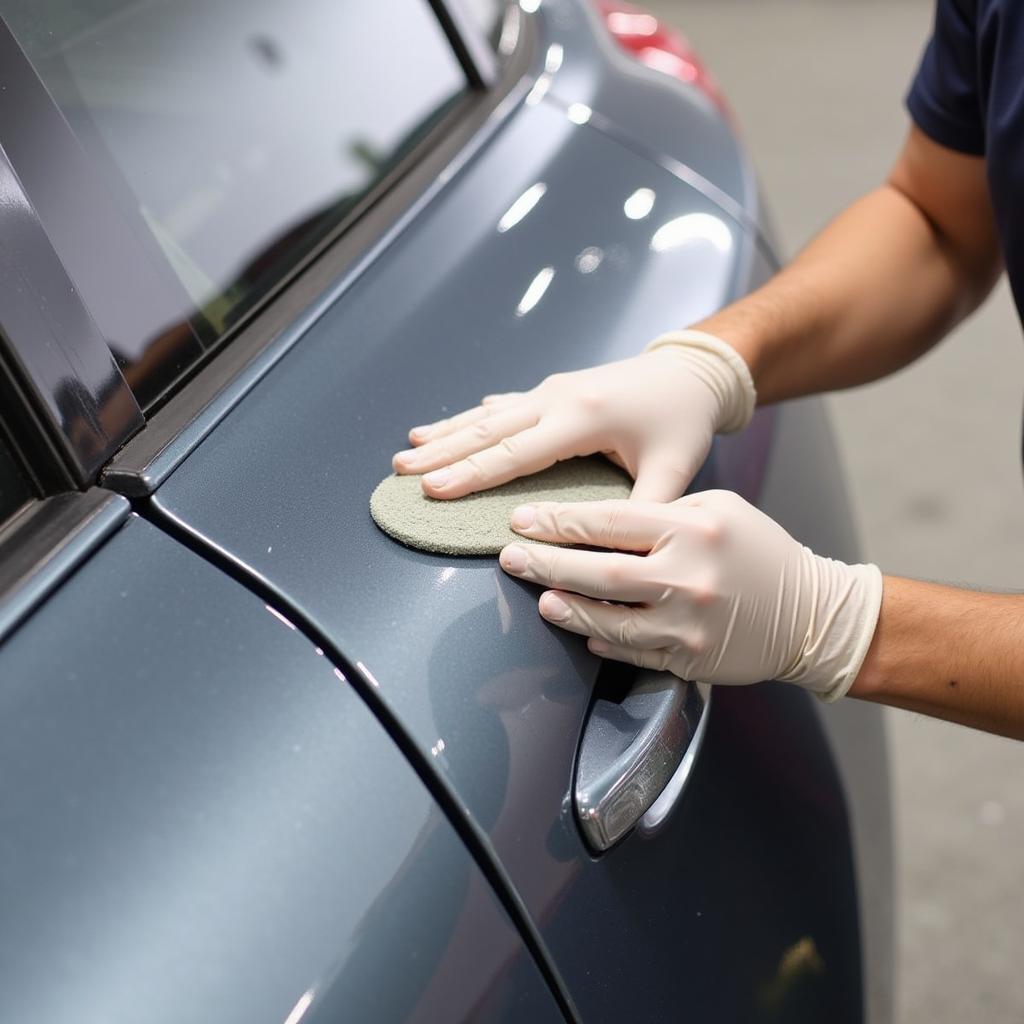Fixing Plastic Car Interior can seem daunting, but with the right tools and techniques, you can restore your car’s interior to its former glory. This guide provides expert advice on repairing various types of plastic damage, from cracks and scratches to fading and warping. We’ll cover everything you need to know, whether you’re a DIY enthusiast or a professional mechanic.
Fixing a cracked dashboard or a broken interior handle can make a big difference in your car’s appearance and value. Learn fixing car interior dash crack for a step-by-step guide.
Understanding the Different Types of Plastic Damage
Before diving into repairs, it’s essential to identify the type of damage you’re dealing with. Different plastics require different repair methods. Common issues include cracks, scratches, fading due to sun exposure, warping from heat, and broken clips or fasteners.
Cracks and Scratches: The Most Common Culprits
Cracks and scratches are often caused by impacts, sharp objects, or even extreme temperature changes. Minor scratches can often be buffed out, while deeper cracks may require filling and repainting. Understanding the severity of the damage will help you choose the right repair method.
 Fixing Plastic Car Interior: Crack Repair
Fixing Plastic Car Interior: Crack Repair
Materials and Tools for Fixing Plastic Car Interior
Having the right tools and materials is crucial for successful plastic repair. Here’s a list of essential items:
- Plastic repair kit: These kits usually include filler, adhesive, and applicators.
- Sandpaper: Various grits are needed for smoothing and preparing the surface.
- Cleaning solution: A good cleaner will remove dirt and grease, ensuring proper adhesion.
- Heat gun or hairdryer: Useful for reshaping warped plastic.
- Plastic primer and paint: For finishing and matching the repaired area.
Having the right tools, like a heat gun, can be invaluable. For example, you can find out how to fix sagging car roof liner using a heat gun.
Step-by-Step Guide to Repairing Cracks
- Clean the damaged area thoroughly with a suitable cleaning solution.
- Sand the cracked area lightly to create a rough surface for better adhesion.
- Apply the plastic filler according to the manufacturer’s instructions.
- Allow the filler to dry completely.
- Sand the filled area smooth and level with the surrounding surface.
- Prime and paint the repaired area to match the original color.
Addressing issues like a hanging ceiling can greatly improve the overall feel of your car’s interior. Find out how to fix hanging ceiling in car.
 Repairing Scratches on Car Door Panel
Repairing Scratches on Car Door Panel
Addressing Warped Plastic
Warped plastic can often be reshaped using heat. Carefully apply heat with a heat gun or hairdryer, gradually reshaping the plastic to its original form. Be careful not to overheat the plastic, as this can cause further damage.
“When working with warped plastic, patience is key,” advises John Miller, a seasoned automotive technician at Miller’s Auto Repair Shop. “Applying heat too quickly can lead to irreversible damage. Slow and steady wins the race.”
Fixing Broken Clips and Fasteners
Broken clips and fasteners are a common issue, often causing loose or rattling interior parts. Replacement clips and fasteners can usually be found at auto parts stores. Carefully remove the broken pieces and install the new ones, ensuring a secure fit.
Preventing Future Damage
Protecting your car’s interior from the elements and avoiding harsh chemicals can help prevent future damage. Using UV protectant sprays and regularly cleaning the interior can significantly extend the life of your plastic components.
If you have classic car and its trim is lifting, check out classic car how to fix lifting trim. This guide offers specific advice for older vehicles.
Conclusion
Fixing plastic car interior requires patience and attention to detail, but the results can be incredibly rewarding. By following the steps outlined in this guide, you can restore your car’s interior to its original condition and protect it from future damage. Remember, addressing small issues promptly can prevent them from becoming major problems down the road. Fixing plastic car interior yourself can save you money and give you a sense of accomplishment. For any questions or concerns, feel free to contact us at AutoTipPro. Our phone number is +1 (641) 206-8880 and our office is located at 500 N St Mary’s St, San Antonio, TX 78205, United States.
You can also explore fix scratches car dashboard for more specific advice on dealing with scratches on your dashboard.







Leave a Reply